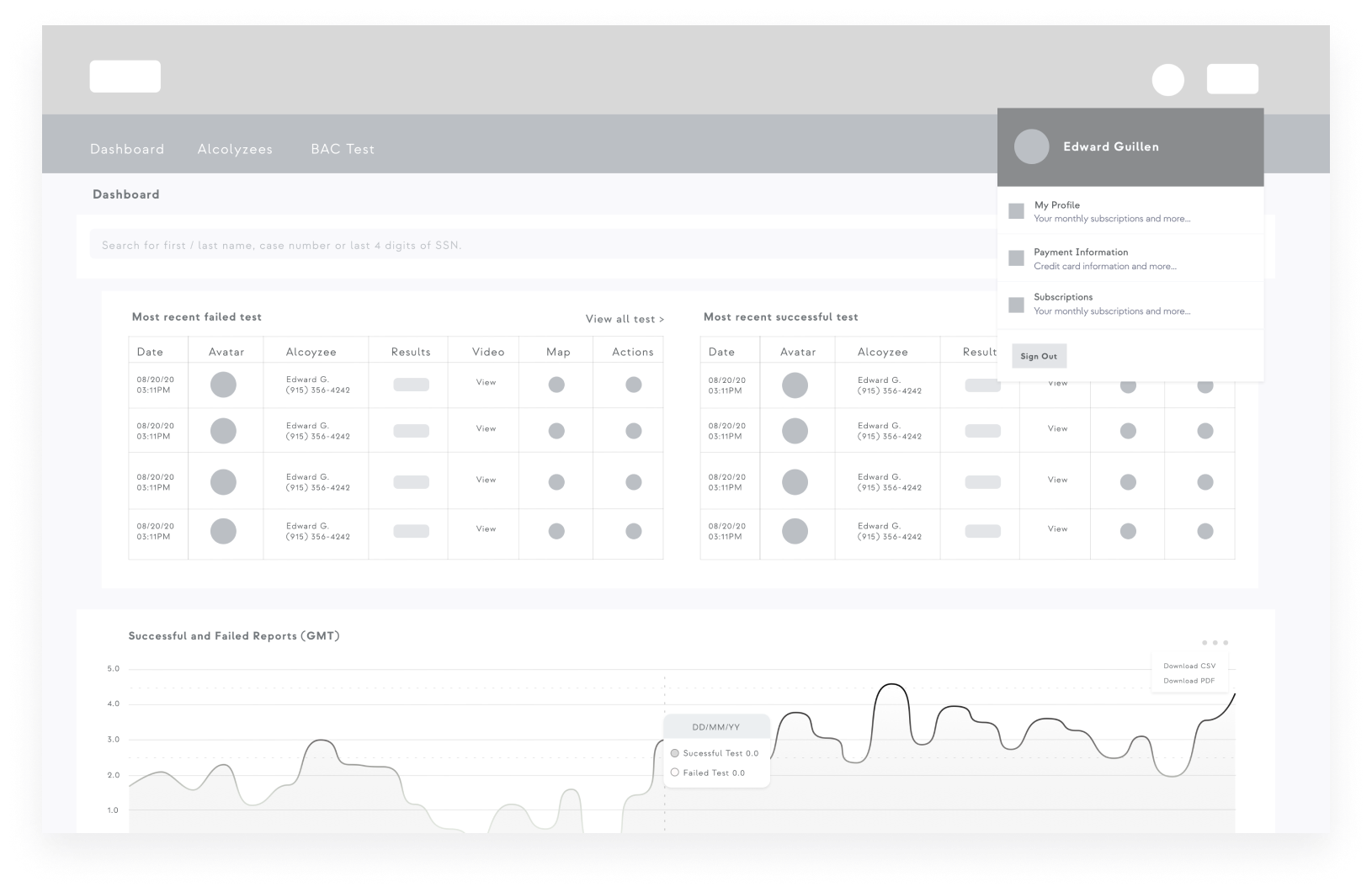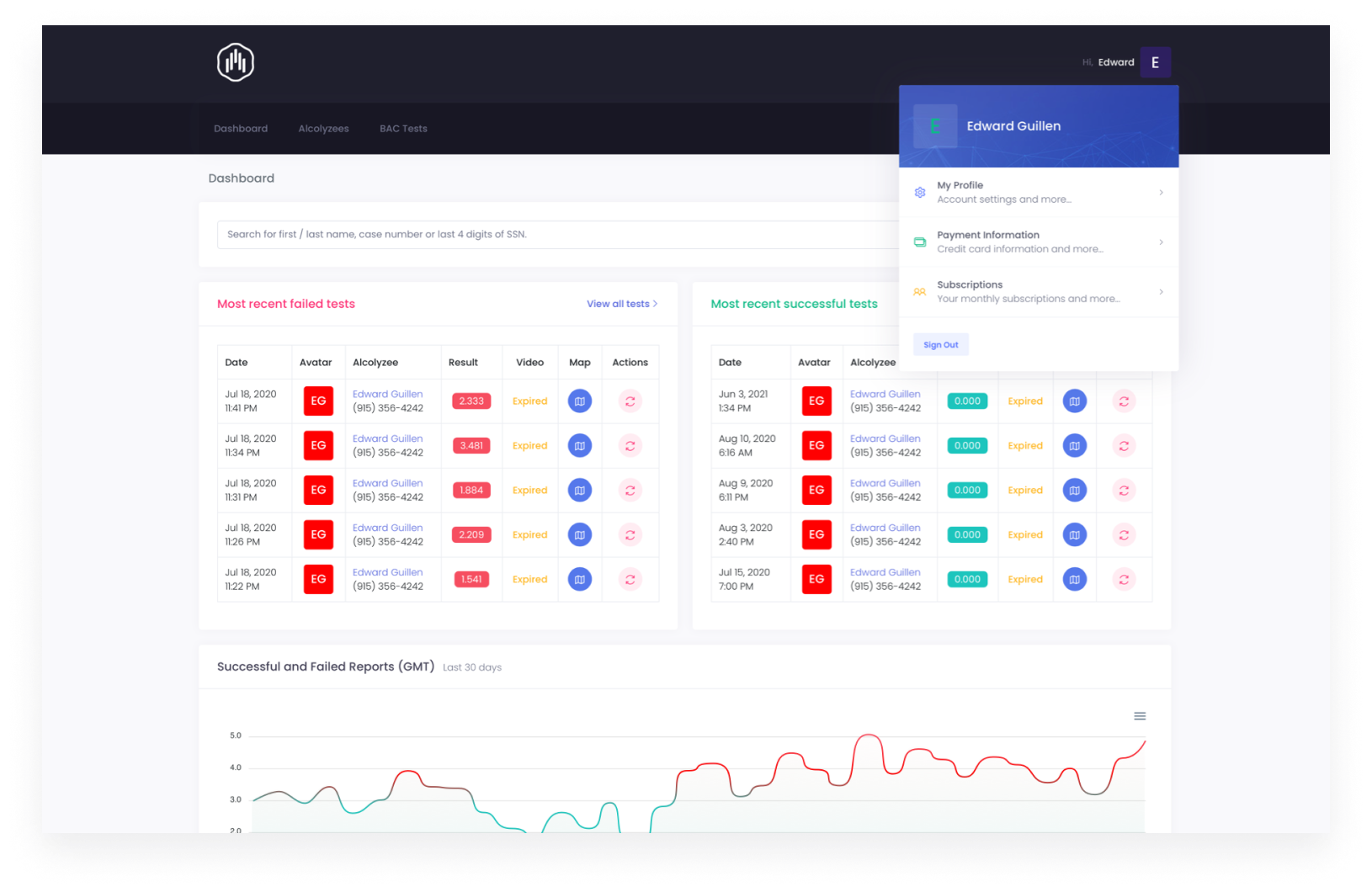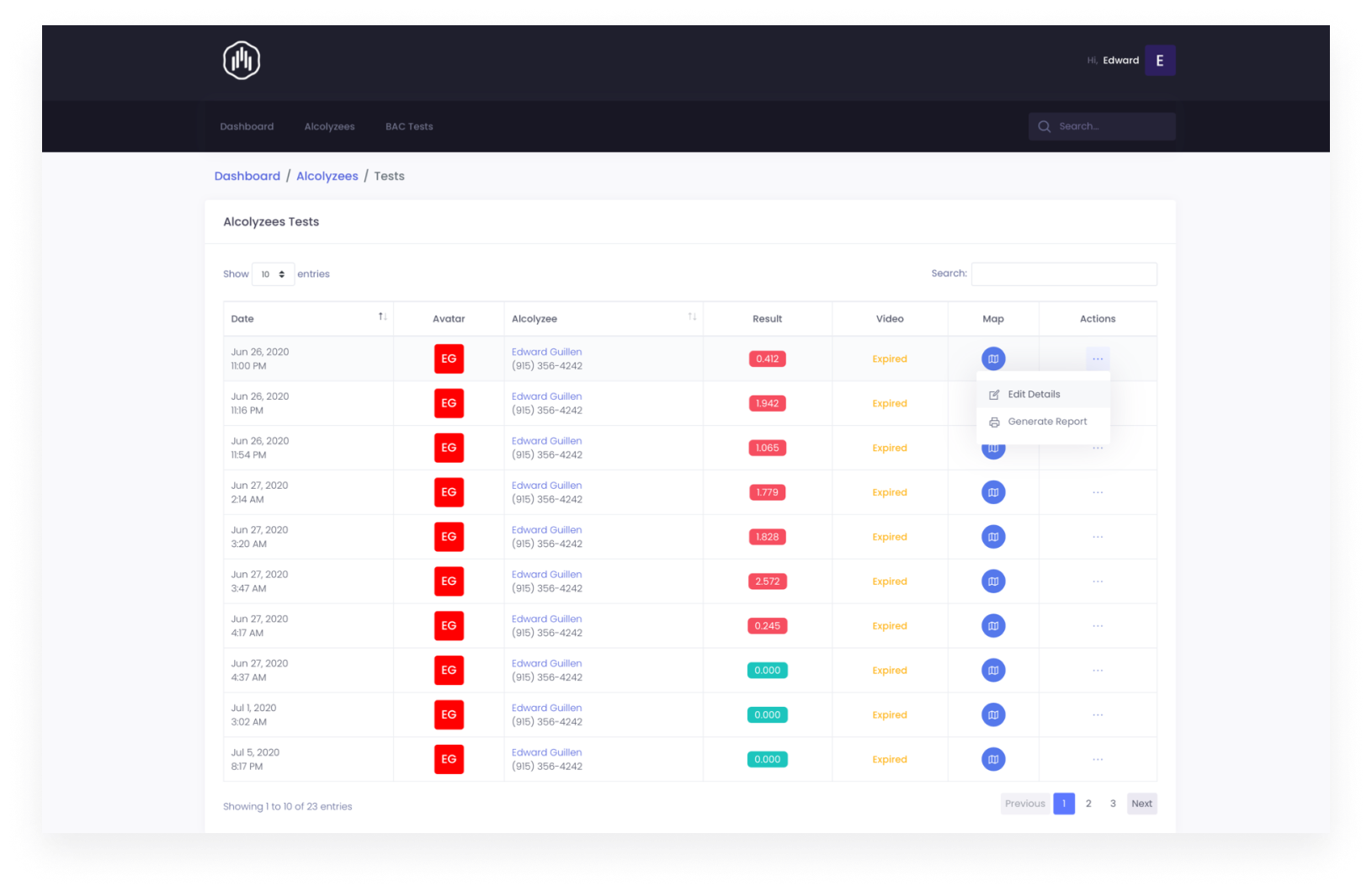Blood Alcohol Concentration Monitoring (BAC)
Alcolyze Alcolyze
The Role
I served as the Founding Designer, actively engaged in every aspect of the design journey. From conceptualizing native applications for iOS and Android to crafting SaaS interfaces and landing pages, I was hands-on throughout. In close collaboration with our founding VC partners, I steered the project from its initial phase to its first major milestone.
The Challenge
The initial challenge was integrating Web 3 blockchain technology in a way that prioritized data privacy, especially when handling sensitive data. Feedback indicated users' concerns about the storage and accessibility of their information. With an increasing global emphasis on data security, it became essential for us to ensure robust security while maintaining clear transparency, especially when using IoT devices for data collection.
The Solution
We developed a Native App and SaaS Web 3 blockchain with advanced encryption to protect data integrity and boost user trust, particularly for IoT data collection.
Design Process
User-Centric Focus
I began with the user at the core. I dove deep into understanding their needs, preferences, and challenges. Through this centric approach, I ensured the design resonated with its intended audience and met their specific requirements.
Collaborative Approach
I involved a diverse team throughout the design process. This included designers, engineers, and most importantly, users themselves. By integrating different perspectives, the design became more inclusive and catered to a broader audience.
Outcomes vs. Outputs
Throughout the design phase, I distinguished between outputs (the tangible deliverables) and outcomes (the broader impacts). While an output might be a drafted design, the outcome is the user experience it facilitates. This focus ensured the design added genuine value, not just volume.
Test and Refine
Once the prototype was in hand, I engaged in extensive testing with real users. Their feedback was a goldmine, allowing me to refine the design further, ensuring its efficiency and effectiveness in the real world.
Interview Sessions with Key Personas

Interviews
We gained valuable insights into the product, which allowed us to develop it based on approved outcomes. This helped us align seamlessly with the team's roadmaps and milestones. We used Atlassian's Project Management tool, Jira, to keep the project on track. To get a well-rounded understanding of our target users, we conducted a series of interviews with our personas. We engaged with both offenders and probation officers to deeply understand their unique needs, challenges, and motivations related to the Alcolyze BAC dApp.
LoFi-HiFi dApp
The finalized dashboard native app, tailored for offenders, provides an overview of activities, allows test initiation, and offers results review. Users can also purchase a new IoT device directly in the dApp. A clear progression is seen from the app's initial low-fidelity designs to its high-fidelity final versions. Understanding potential reluctance from offenders due to embarrassment, we implemented an incentive system. Compliant and timely BAC test submissions earn rewards like gift cards. If an offender fails a test, a re-test is set for 15 minutes later. Non-compliance triggers calls and disciplinary actions. Additionally, alerts are sent for IoT device replacement as its BAC cell deteriorates.
LoFi-HiFi Desktop
We started by examining the problems on the existing platform, especially the most common ones, using tools like heat maps and recordings. From these observations, combined with brainstorming sessions, we gained valuable user insights. These insights were instrumental in guiding our design decisions and feature choices for the app. With the help of personas and usability interviews, as well as a blend of quantitative and qualitative data, my team and I began crafting the app's structure. I then moved on to developing wireframes and prototypes. Testing these designs with users was crucial, and their feedback was key. We went through quick and essential prototyping rounds, making changes based on what we learned from these user interactions, ensuring the final design was truly centered around our users.





Final Thoughts
The Alcolyze system effectively increased user compliance, ensured data privacy through web3 blockchain dApp, reduced non-compliance with swift re-tests, maintained IoT device functionality with timely alerts, and received high praise from both probation officers and offenders for its user-friendly design and transparency.
Navigating the end-to-end process of the Alcolyze project and focusing on our outcome-based approach was truly rewarding. If you have any questions or want more insights, please feel free to reach out!


